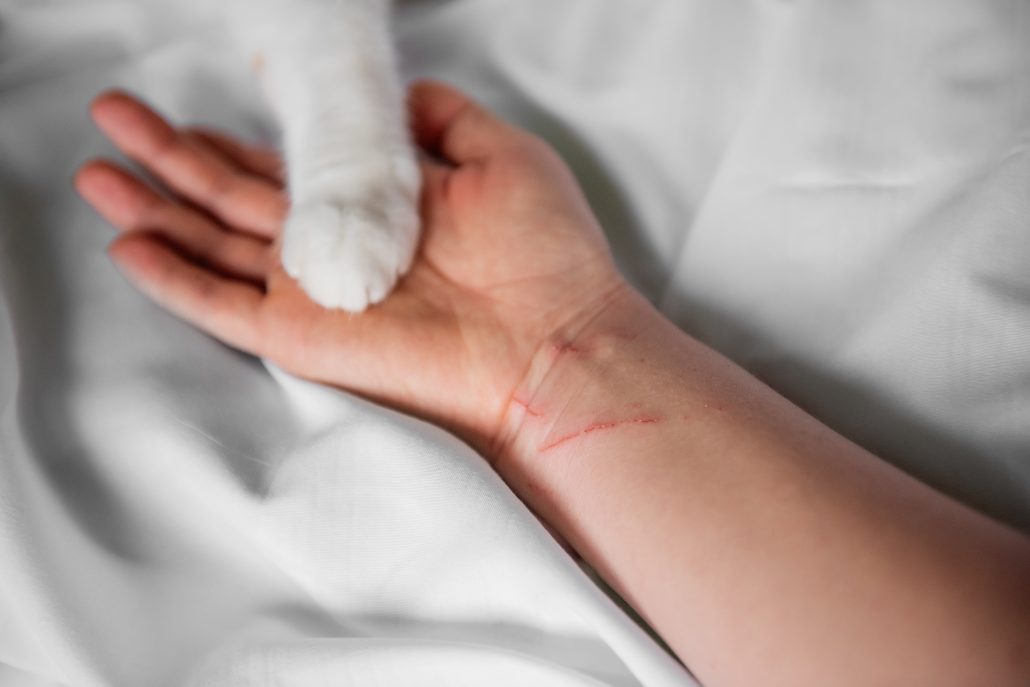
Old or young, there is nothing better than bringing a pet into your life! But they also come with a lot of responsibility too. Caring for your pet is not just about making sure they get enough food, love and playtime (though those are pretty great too!) Looking after your furry friend means keeping them healthy, and that includes regular vet checkups and preventative care.
One of the most important preventative care steps is spaying (also known as desexing) your female pet. While it plays an essential role in the long-term health and well-being of your pet, like any vet visit, it can be a little scary! Knowing what to expect can help ease those nerves for both of you.
In this post, we’ll walk you through everything you need to know about spaying your female pets: why it matters, when it’s best to do it, and what to expect before, during, and after the procedure.
Understanding Female Pet Spaying
Spaying, also known as desexing or “fixing”, is one of the most common surgical procedures performed by vets. It’s a routine operation that plays a big role in your pet’s long-term health and wellbeing.
Medically referred to as an ovariohysterectomy, female spay surgery involves the removal of a female pet’s reproductive organs, specifically, both the ovaries and the uterus. Some vets may instead perform an ovariectomy, which removes only the ovaries while leaving the uterus in place.
Spaying is a one-time surgery with lifelong effects. Once it’s done, your pet won’t be able to reproduce, and you won’t have to manage heat cycles or the risk of unplanned litters.
Why Should You Spay Your Pet?
Spaying your female pet isn’t just a responsible choice, it’s one of the best things you can do for her health, happiness, and quality of life. It is a simple, one-time surgery that reduces potential risks and offers a lifetime of benefits, not only for your pet but for the wider community too!
1. Reduced Cancer Risk
Spaying dramatically lowers your pet’s chances of developing serious reproductive cancers (like ovarian cancer). For example, female dogs spayed before their first heat cycle have less than a 0.5% risk of developing mammary (breast) cancer. That’s huge when you consider that around 50% of mammary tumors in dogs, and 90% in cats, are malignant (risk of being cancerous). Spaying also eliminates the risk of ovarian and uterine cancers altogether.
2. Protection Against Dangerous Infections
One of the biggest threats to unspayed female dogs is pyometra—a life-threatening uterine infection that affects up to 1 in 4 unspayed dogs by the time they 10. This condition often requires emergency surgery and intensive care. Spaying removes the uterus and ovaries, completely preventing this risk.
3. Fewer Behavioural Challenges
When a pet is in heat, it can lead to all sorts of unwanted behaviours from both your pet and surrounding animals in the community. Spaying puts a stop to:
- Heat cycles that occur twice a year and can last up to three weeks
- Bloody discharge that can stain your furniture and carpets
- Restlessness, crying, anxiety, and other signs of hormonal stress
- Roaming tendencies and attempts to escape in search of a mate
4. Helps Control Pet Overpopulation
Every year, rescue centres across Australia are overwhelmed with unwanted litters. The RSPCA alone takes in thousands of cats and dogs each year, many of whom never find a forever home. Spaying helps prevent accidental litters and reduces the number of animals that end up abandoned or euthanised simply because there aren’t enough loving homes.
5. A Longer, Healthier Life
Spayed pets tend to live longer. That’s because the surgery removes the risk of various reproductive health issues and hormone-driven diseases. Less stress on their bodies means more happy, healthy years by your side!
6. A One-Time Cost That Saves in the Long Run
Spaying your female pet is a smart and compassionate choice. Why? It is a small investment compared to the ongoing expenses of caring for unexpected litters, or the emotional and financial cost of emergency medical care for preventable conditions in the future.

When Is The Right Time To Spay Your Female Pet?
There’s no one-size-fits-all answer when it comes to the perfect time to spay your pet. The ideal timing depends on several factors, including your pet’s species, breed, size, and overall health. While there are general guidelines, the best approach is always one that’s tailored to your individual pet.
As a general rule, spaying before your pet’s first heat cycle provides the greatest health benefits, particularly when it comes to reducing the risk of mammary cancer. However, this has to be weighed against other considerations, especially in large-breed dogs.
But your vet knows best. They’ll consider your pet’s breed, size, health status, and lifestyle to recommend the safest and most beneficial timing for spaying.
For Cats
Some cats can get pregnant as early as 4 months old, so many cat vets recommend spaying cats between 4 to 6 months of age. Cats are also capable of producing multiple litters each yea,r so spaying early helps prevent unwanted pregnancies and protects against reproductive health issues. However, in some shelters and rescue settings, the procedure may be done as early as 8 weeks old.
For Dogs
Dogs mature at different rates, so the timing of spaying varies most depending on their breed and size:
- Small Breed Dogs: Most dog vets recommend spaying between 6 to 9 months of age. This gives them time to develop while still offering protection against diseases like mammary cancer.
- Large and Giant Breed Dogs: Bigger dogs take longer to mature. In these cases, many vets suggest waiting until 12 to 18 months before spaying. This allows their bones and joints to fully develop, which may help reduce the risk of orthopaedic issues later in life.

Female Spay Surgery Step by Step
If you’re feeling a little anxious about your pet’s upcoming surgery, you’re definitely not alone. It’s completely normal, especially if this is your first time! But the more you know, the more confident and prepared you’ll feel.
Before the Surgery
Spaying might be a routine procedure, but your vet will still take every precaution to make sure your pet is healthy and ready. Before surgery, you can expect:
- A thorough pre-op check: Your vet will carry out a physical exam and may recommend blood tests to ensure your pet can safely undergo anesthesia.
- Fasting instructions: You’ll likely be asked to withhold food the night before and water on the morning of the procedure. This helps prevent complications while your pet is under anesthesia.
- Early morning drop-off: Most surgeries are scheduled in the morning, so plan to get to the clinic early.
During the Surgery
Once your pet is admitted, the vet team will take several steps. These include:
- Sedation is given to help reduce anxiety and manage pain.
- An IV catheter is placed for administering fluids and medication.
- Anesthesia is carefully administered, and an endotracheal tube is inserted to help your pet breathe safely.
- The surgical area is prepped by clipping fur and sterilising the abdomen.
- The veterinarian makes a small incision near the belly button.
- Using a specialised tool, the vet locates and removes the ovaries and the uterus as well.
- Once everything is removed, the vet checks for any bleeding and closes the incision in layers, usually using dissolvable stitches that don’t need to be removed later.
How Long Does Spay Surgery Take?
Several factors affect how long a spay takes. The surgery itself usually lasts 20-90 minutes. Small or young dogs need about 20-45 minutes. Large-breed or older dogs might take longer.
However, your pet will spend more time at the vet than just the surgery itself. This will allow time for:
- Pre-surgical assessments
- Administering anesthesia
- Monitoring recovery from anesthesia
- Post-op care and final checks
In most cases, your pet will be able to go home the same day, though in some instances your vet may recommend overnight observation for safety.
Throughout the procedure, your veterinary team will closely monitor your pet’s heart rate, oxygen levels, and temperature. Many clinics also use warming blankets during surgery to keep pets cozy and stable. It’s all part of ensuring your companion stays as safe and comfortable as possible.

Post-op care & What To Expect
Bringing your pet home after their spay surgery is the start of a very important healing journey. The weeks following the procedure require our watchful eye and special care to make sure our furry friends heal properly without any unwanted complications.
The First 24 Hours
When you first get home, your pet may be a little sleepy, wobbly, or even shivery. These are normal side effects of anesthesia and should ease over the next day. Set up a quiet, cozy space away from stairs, children, or other pets where they can rest without disruption. Baby gates or crates can be helpful in creating a safe recovery zone.
Even though rest is important, gentle movement around the house can actually support a smoother recovery, so don’t worry if they get up and shuffle around a bit. Just be sure to keep things calm and slow.
When it comes to mealtime, offer a small portion of their regular meal later in the evening. It’s completely fine if they’re not interested at first, many pets don’t feel like eating until 24–48 hours after surgery.
Pain Management
Your vet will typically give pain relief before your pet comes home and may also prescribe take-home medications. These might include anti-inflammatory or pain-relief medication. Be sure to follow your vet’s instructions carefully and never give your pet human medications, as they can be extremely dangerous.
Most pets begin to feel much better within a few days, with most discomfort gone after a week. If your pet seems unusually uncomfortable or isn’t improving, don’t hesitate to check in with your vet.
Activity Restrictions
This is one of the most important parts of recovery. To allow proper healing and avoid complications like torn stitches or internal bleeding, your pet should avoid:
- Running or jumping
- Playing roughly with other pets or kids
- Going up and down stairs
- Bathing or swimming
- Off-leash walks or playtime
Stick to short, on-leash toilet breaks and keep them in a small, calm space at home.
Monitoring the Incision
Keep a close eye on your pet’s incision site. It’s best to check it twice a day and take a photo on the first day to help track changes. A healthy incision will look like a clean, closed line, with mild redness or swelling early on.
- Contact your vet if you notice any of the following:
- Redness, swelling, or bruising that gets worse
- Discharge that’s yellow, green, or has a bad smell
- The incision opening up or missing stitches
- Bleeding that doesn’t stop
Licking or chewing the incision should be avoided at all costs, as this can cause infection or delay healing. If your pet is too interested in their stitches, a recovery suit or may be necessary.
Mood & Behaviour Changes
Your pet might seem different in the days after surgery, and that’s okay. They’ve been through a lot and may be feeling a bit sensitive, tired, or more attached than usual. While some pets may temporarily show signs of increased fearfulness or touch sensitivity, these behaviours typically settle down as they adjust to hormone changes.
There is the misconception that spaying completely changes your pet’s core personality. This is not typically the case. While it does influence behaviours related to their hormones and roaming, a pet’s personality is also shaped by their genetics and environment.
Physical Changes
Spaying can slightly lower your pet’s metabolism, which means it’s a good idea to keep an eye on their weight. Once your vet gives the all-clear, getting back into regular (but gentle) exercise and keeping them on a healthy diet can help maintain a healthy balance.
Some pets may also experience minor changes in their coat or skin condition, and it’s normal for female dogs to have a small amount of bloody urine for a day or two. However, if the bleeding is heavy or lasts longer than expected, it’s best to call your vet for advice.

Complications and Considerations
While spay surgery is a common and generally safe procedure, it is still important to be aware of the possible complications. This doesn’t mean expecting the worst. It simply means being prepared so you can make confident decisions and provide the best care during recovery.
Short-Term Complications
The vast majority of spay procedures go smoothly. Serious complications are quite rare, and the most common issue shortly after surgery is bleeding. Occasionally, a condition called ovarian remnant syndrome may occur if a small piece of ovarian tissue remains. While this is uncommon (less than 1% of cases), it can cause your pet to appear as though she’s going into heat again and may require additional surgery to correct.
Long-Term Health Considerations
Spaying does come with some long-term considerations that vary depending on your pet’s breed, size, and age. Urinary incontinence affects around 5–20% of spayed females, especially in larger dogs and changes in hormone levels may increase appetite and slow metabolism, which can lead to weight gain if not managed with proper diet and exercise.

Make the Best Choice
Spaying your female pet is one of the most important health decisions we make as pet parents. While it’s natural to feel a little nervous, the long-term health benefits far outweigh the temporary risks. From reducing the risk of serious diseases to helping your pet live a longer, happier life, spaying is one of the most impactful choices you can make as a pet parent.
At The House Call Vet, we understand how important your furry family member is. That’s why we’re here to offer expert guidance, gentle care, and compassionate support—before, during, and after surgery.
Ready to take that next step? Book an appointment with us today and give your pet the healthy, happy future they deserve.

